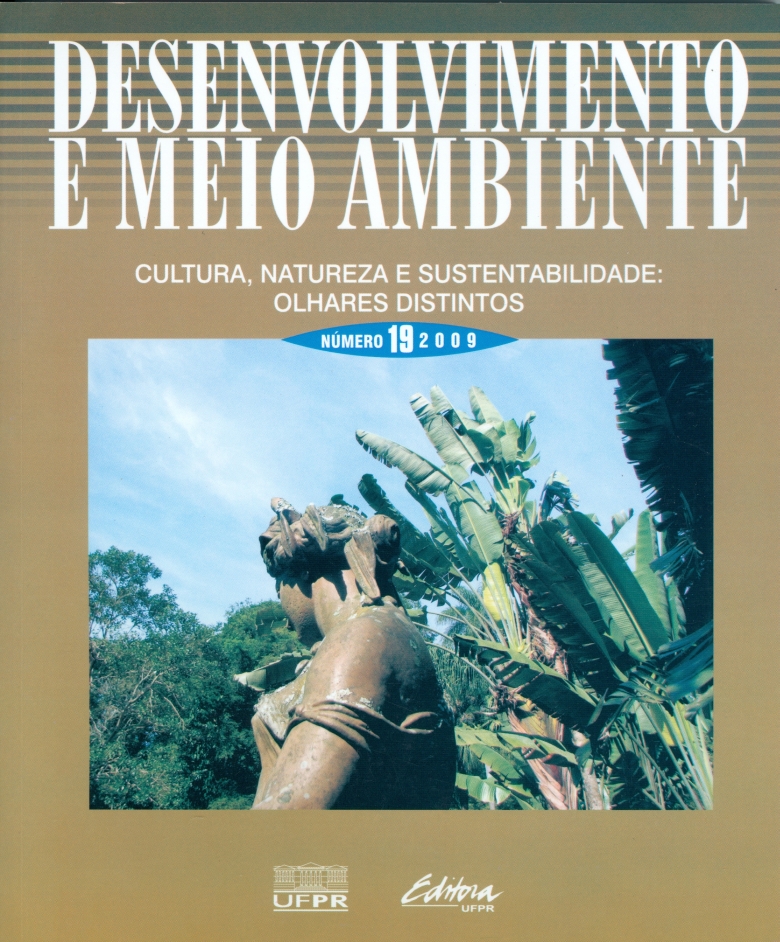Governança territorial em zonas costeiras protegidas: uma avaliação exploratória da experiência catarinense
DOI:
https://doi.org/10.5380/dma.v19i0.13759Palavras-chave:
Integrated coastal areas management, socio-environmental conflicts, sustainable territorial development, Santa Catarina, gestão integrada de zonas costeiras, conflitos socioambientais, desenvolvimento territorial sustentávelResumo
O artigo oferece subsídios para o debate acadêmico sobre a viabilidade de estratégias alternativas de desenvolvimento em zonas costeiras protegidas, no atual cenário de globalização assimétrica. A linha de argumentação coloca em primeiro plano a perspectiva de aplicação do conceito de desenvolvimento ter-ritorial sustentável ao processo em curso de criação de um sistema de gestão integrada e participativa do litoral catarinense. Na primeira parte, apresentamos uma visão panorâmica do processo de normatização dos instrumentos utilizados no Sistema de Gestão de Unidades de Conservação no Brasil (SNUC). Além disso, oferecemos uma síntese do processo de construção do projeto de Gestão Integrada das Unidades de Conservação Marinho-Costeiras do Estado de Santa Catarina (GIUC-SC). Em seguida, exploramos o potencial contido na abordagem territorial do desenvolvimento para a consolidação do processo de integração do SNUC ao Plano Nacional de Gerenciamento Costeiro. No final do texto justificamos a necessidade de investimentos mais substanciais em pesquisas de corte ecológico-político sobre mediação de conflitos socioambientais e promoção de sistemas de governança territorial nessas áreas.
Downloads
Publicado
Como Citar
Edição
Seção
Licença
Os Direitos Autorais sobre trabalhos publicados nesta revista são do autor, com direitos de primeira publicação para a revista. O conteúdo dos trabalhos publicados é de inteira responsabilidade dos autores. A DMA é um periódico de acesso aberto (open access), e adota a licença Creative Commons Atribuição 4.0 Não Adaptada (CC-BY), desde janeiro de 2023. Portanto, ao serem publicados por esta Revista, os artigos são de livre uso para compartilhar (copiar e redistribuir o material em qualquer suporte ou formato para qualquer fim, mesmo que comercial) e adaptar (remixar, transformar, e criar a partir do material para qualquer fim, mesmo que comercial). É preciso dar o crédito apropriado, prover um link para a licença e indicar se mudanças foram feitas.
Os conteúdos publicados pela DMA do v. 53 de 2020 ao v. 60 de 2022 são protegidos pela licença Creative Commons Atribuição – Não Comercial – Sem Derivações 4.0 Internacional.
A DMA é uma revista de acesso aberto desde a sua criação, entretanto, do v.1 de 2000 ao v. 52 de 2019, o periódico não adotava uma licença Creative Commons e, portanto, o tipo de licença não é indicado na página inicial dos artigos.




